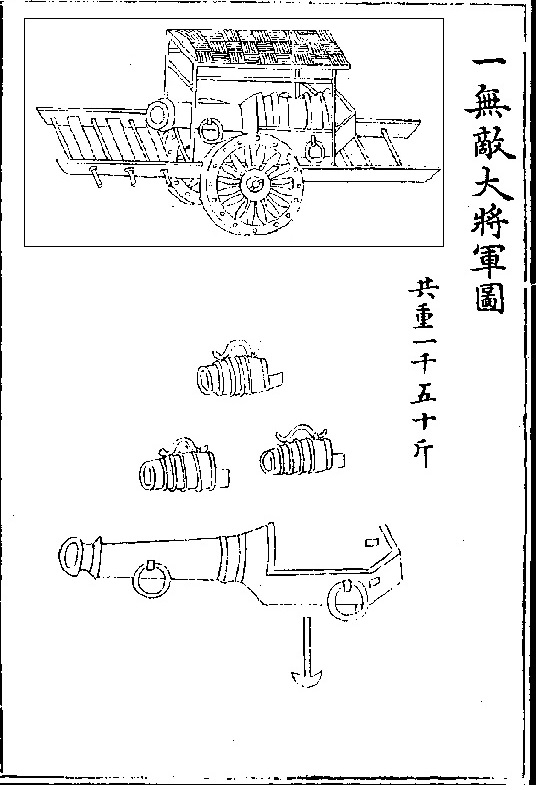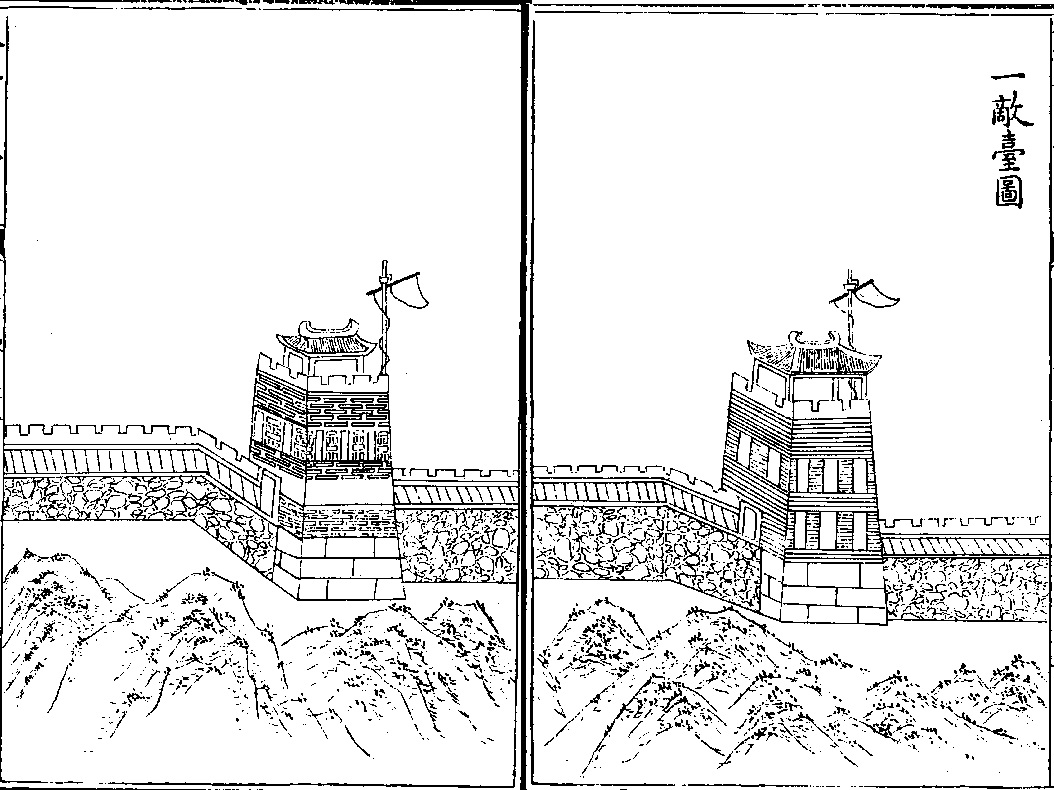Lianbing shiji 練兵實紀 "Practical arrangement of military training" is a military treatise from the Ming period 明 (1368-1644) written by Qi Jiguang 戚繼光 (1528-1588). It has a length of 9 juan, plus a supplement of 6 juan. The book was finished in 1571.
 |
"Cannon of the general of no enemies" (wu di da jiangjun 無敵大將軍, i.e., thus fierce that no one dares to become his enemy), apparently a breach-loading model, with a weight of 1,500 jin 斤 (c. 750 kg). The inserted part (copied from the next page) shows the cannon mounted on a vehicle. From Lianbing shiji 練兵實紀 5 (Siku quanshu 四庫全書 edition). |
 |
"Fowling musket" (niaochong 鳥銃), right complete, and left single parts like lock, stock, rammer and barrel. The matchlock musket weighed of 6 jin (3 kg) and was to be equipped with fuses with a standard length of 2.5 zhang 丈. |
 |
Watchtowers (ditai 敵臺) like those visible at the Great Wall. Lianbing shiji 6. |
The first part of the book describes the training of troops. Except for training the physical stamina of the soldiers, their minds had to be prepared so that a military unit would consist of one single will and mind. The text describes how many firearms particular types of units were equipped with. A chariot brigade, for instance, disposed of 128 chariots and 256 cannons, as well as a high number of muskets and rockets. Infantry and cavalry units must be trained differently from musketeers and gunners.
Nevertheless, each type of troops needed to cooperate with the others during battle so that each unit could profit from the other's strength. Apart from the soldiers, the most critical people were high officers. They had to be carefully selected and trained in the art of war, especially in correctly and effectually using the troops and how to nourish, train and encourage them. Military academies (wuxiang 武庠) had to be established for the higher officer ranks.
The language of the Lianbing shiji is relatively simple, making it easy to read and memorise by officers.
There are many prints from the Ming and Qing 清 (1644-1911) periods, and also quite a few manuscripts were circulated. The Lianbing shiji is included in many series, for example, the Mohai jinhu 墨還金壺.